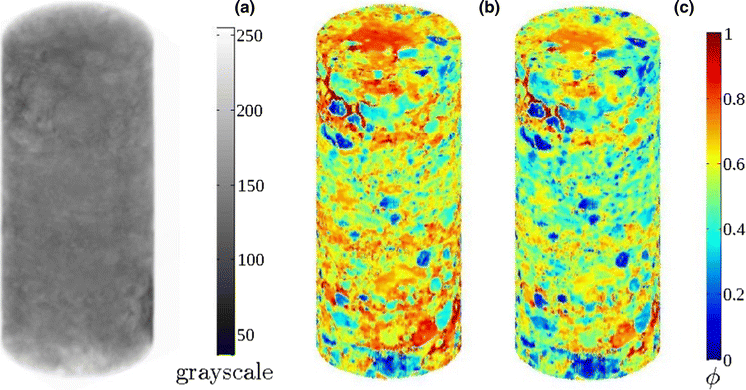Soil pores, carbon stores, and breathing microbes

Researchers at the Pacific Northwest National Laboratory (PNNL) recently studied how moisture influences soil heterotrophic respiration. That's the breathing-like process by which microbes convert dead organic carbon in the soil to carbon dioxide.
Globally, soils store enormous quantities of organic carbon, some of which is consumed by microbes and exhaled as carbon dioxide. In this way, soils produce a major natural carbon dioxide flux into the atmosphere every year. (The amount is large: roughly six times larger than human emissions of the same greenhouse gas.)
Understanding what influences this flux has enormous implications for understanding climate change and the carbon cycle, and for setting emissions targets.
The Biogeochemistry study offers a cost-effective modeling strategy that is the first to investigate the effect of moisture on these climate-critical respiration rates at the hard-to-simulate pore scale. The paper also argues that simulations need to acknowledge the diversity of soil pore spaces, and move beyond the modeling assumption that soils are homogeneous.
It is already well known that moisture conditions in soil affect the respiration rates of heterotrophic microbes. But consider the complex, tiny worlds in which moisture dwells and does its work. Soils are made of sand, silt, clays, and organic matter formed into miniature "porospheres." In turn, these interlocking microbial habitats are riven with water and gases.
Modeling heterotrophic respiration at what scientists call the "pore scale" is difficult. For one, there are big computational challenges to modeling fluids at such a tiny scale. For another, pore-scale modeling is difficult because of microscale differences within soil. It turns out that the distribution of organic carbon in soils is highly localized. How much organic carbon goes where depends on physical protection, chemical recalcitrance, pore connectivity, non-uniform microbial colonies, and local moisture content.
This study—authored by Zhifeng Yan, Vanessa Bailey, and four other PNNL scientists—is the first to do a pore-scale investigation of how moisture-driven respiration rates are affected by factors including soil pore structure heterogeneity, soil organic carbon bioavailability, moisture content distribution, and substrate transport. It also provides insight into the physical processes that control how soil respiration responds to changes in moisture conditions. Moreover, the paper's numerical analyses represent a cost-effective approach for investigating carbon mineralization in soils.
The simulations in this study generally confirm several previous assumptions: that soil carbon respiration rate is a function of moisture content; that such rates increase as moisture (and therefore substrate availability) increases; and that soil carbon respiration decreases after some optimum because of oxygen limitation.
The results of the study's model, replicated by field research, also confirm that respiration rates go up with higher soil porosity, and that compacted soils - those with less porosity because they are unplowed and undisturbed - reduce the rate at which carbon dioxide escapes into the atmosphere.
Along the way, the study warns of the danger of assuming that modeled soils have a uniform porosity. It is better, the researchers say, to try to simulate the structural heterogeneity—diversity—of soils as they exist in nature.
Further research is needed, they add, on how coupled aerobic and anaerobic processes would speed up or slow down the amount of organic carbon sequestered in soil. These coupled processes were not in the study's design.
More information: Zhifeng Yan et al. Pore-scale investigation on the response of heterotrophic respiration to moisture conditions in heterogeneous soils, Biogeochemistry (2016). DOI: 10.1007/s10533-016-0270-0
Provided by Pacific Northwest National Laboratory



















